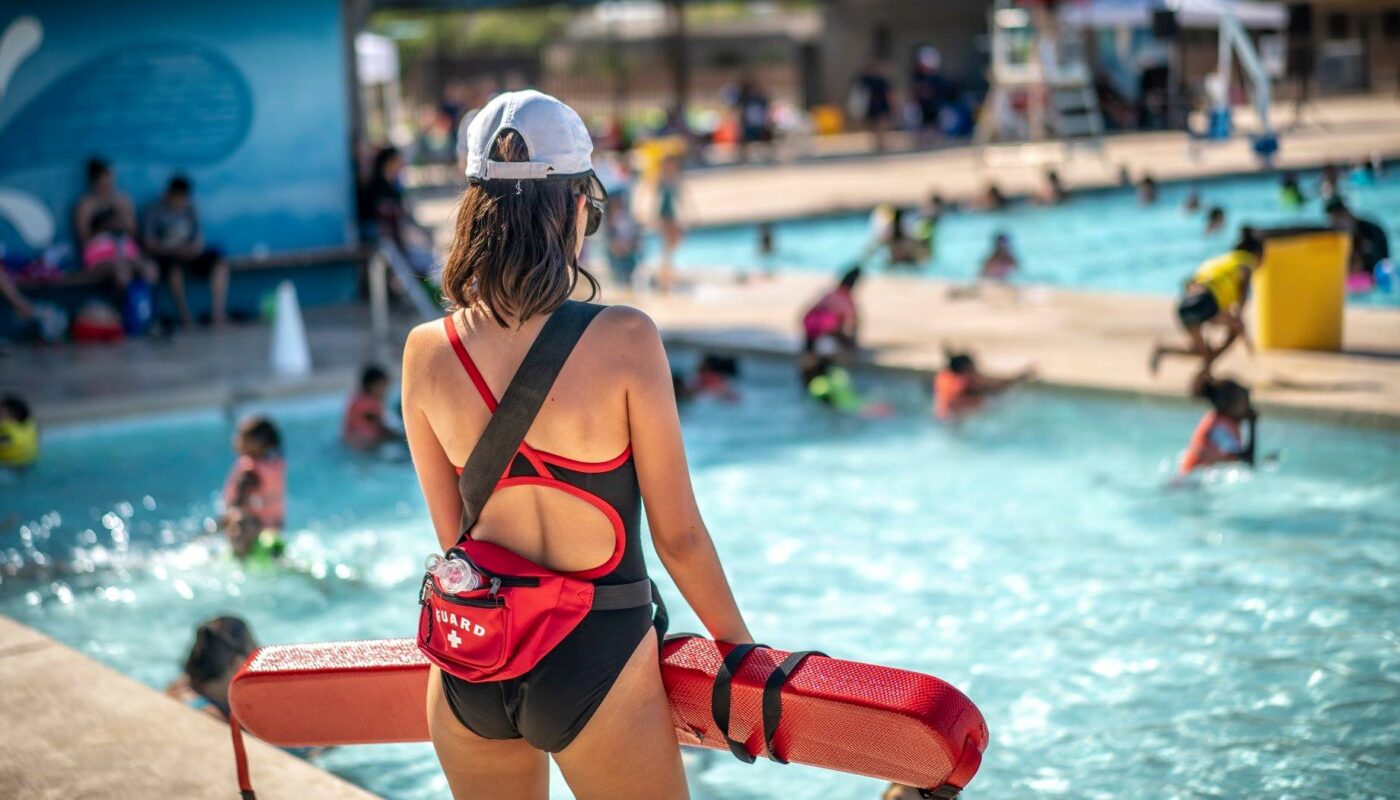Lifeguarding is a noble and essential profession that demands a unique combination of skills, knowledge, and physical fitness. As the guardians of aquatic safety, lifeguards play a crucial role in preventing accidents and saving lives. To become a proficient lifeguard, one must undergo rigorous training that encompasses various aspects, from water rescue techniques to first aid and CPR. This article delves into the intricacies of lifeguard training, providing a comprehensive overview of what it takes to master the waves and ensure the safety of others.
The Importance of Lifeguard Training
Lifeguard training is not just about learning to swim well; it is a multifaceted program designed to prepare individuals for the myriad challenges they might face while on duty. Lifeguards are responsible for the safety of swimmers in pools, lakes, oceans, and water parks. Their quick thinking and actions can mean the difference between life and death. Therefore, their training must be thorough and detailed, covering every possible scenario they might encounter.
Physical Fitness and Swimming Proficiency
The foundation of lifeguard training is physical fitness and swimming proficiency. Lifeguards must be strong swimmers capable of performing rescues under challenging conditions. Training programs typically include endurance swimming, timed swims, and drills that simulate real-life rescue situations. Trainees are taught various swimming strokes and techniques to approach and carry distressed swimmers efficiently.
To ensure lifeguards can perform their duties effectively, they must meet certain physical requirements. These often include:
- Swimming a specified distance within a set time
- Treading water for an extended period
- Performing surface dives to retrieve objects from the bottom of the pool
- Demonstrating proficiency in rescue techniques and equipment handling
Rescue Techniques and Equipment
A significant portion of lifeguard training focuses on rescue techniques and the proper use of rescue equipment. Lifeguards must be adept at using tools such as rescue tubes, buoys, and backboards. They learn how to approach a drowning person safely, avoiding being pulled under by a panicked swimmer. Techniques such as the rear approach, front crawl approach, and underwater approach are practiced extensively.
In addition to rescue techniques, lifeguards are trained in various towing methods to bring a distressed swimmer to safety. These methods include the cross-chest carry, the head carry, and the modified cross-chest carry. Each technique is suited to different scenarios, such as rescuing an unconscious person or a swimmer with a suspected spinal injury.
First Aid and CPR
Lifeguards must be equipped with the knowledge and skills to provide immediate medical assistance. First aid and CPR (Cardiopulmonary Resuscitation) training are integral components of lifeguard certification programs. Lifeguards learn to assess injuries, perform basic wound care, and stabilize victims until emergency medical services arrive.
CPR training is particularly crucial, as lifeguards often encounter situations where a swimmer’s heart has stopped or they have stopped breathing. Lifeguards must be able to perform chest compressions and rescue breaths effectively. They also learn how to use Automated External Defibrillators (AEDs), which are often available at aquatic facilities.
Spinal Injury Management
Spinal injuries are a serious concern in aquatic environments, and lifeguards must be prepared to handle them with care. Training programs include instruction on how to stabilize and immobilize a person with a suspected spinal injury in the water. This involves the use of backboards and head immobilization techniques. Proper spinal injury management is critical to prevent further harm and ensure the victim receives appropriate medical attention.
Communication and Leadership Skills
Effective communication is a vital skill for lifeguards. They must be able to convey instructions clearly to swimmers, communicate with other lifeguards, and coordinate with emergency personnel. Training programs emphasize the development of strong verbal and non-verbal communication skills.
Leadership is another essential aspect of lifeguarding. Lifeguards often work as part of a team and may need to take charge during emergencies. Training includes scenarios that require trainees to make quick decisions, delegate tasks, and manage stressful situations calmly and efficiently.
Legal and Ethical Responsibilities
Lifeguards must understand the legal and ethical responsibilities associated with their role. Training programs cover topics such as liability, duty of care, and the importance of maintaining professional conduct. Lifeguards are taught to follow established protocols and guidelines to ensure the safety of all swimmers and protect themselves from potential legal issues.
Continuous Training and Recertification
Lifeguard training does not end with initial certification. Continuous training and recertification are essential to maintain skills and stay updated with the latest rescue techniques and safety protocols. Many organizations, such as the American Lifeguard Association, offer ongoing training programs and recertification courses. Lifeguards must participate in these programs regularly to ensure they remain competent and effective in their roles.
Conclusion
Lifeguard training is a rigorous and comprehensive process that prepares individuals to safeguard the lives of swimmers in various aquatic environments. It combines physical fitness, swimming proficiency, rescue techniques, first aid and CPR training, spinal injury management, communication, and leadership skills. Lifeguards play a critical role in preventing accidents and responding to emergencies, making their training indispensable. Through continuous education and dedication, lifeguards can master the waves and ensure the safety and well-being of all who enjoy aquatic activities.
Must Read: 13 Ways to Optimize Costs in a Multi-Cloud Environment







